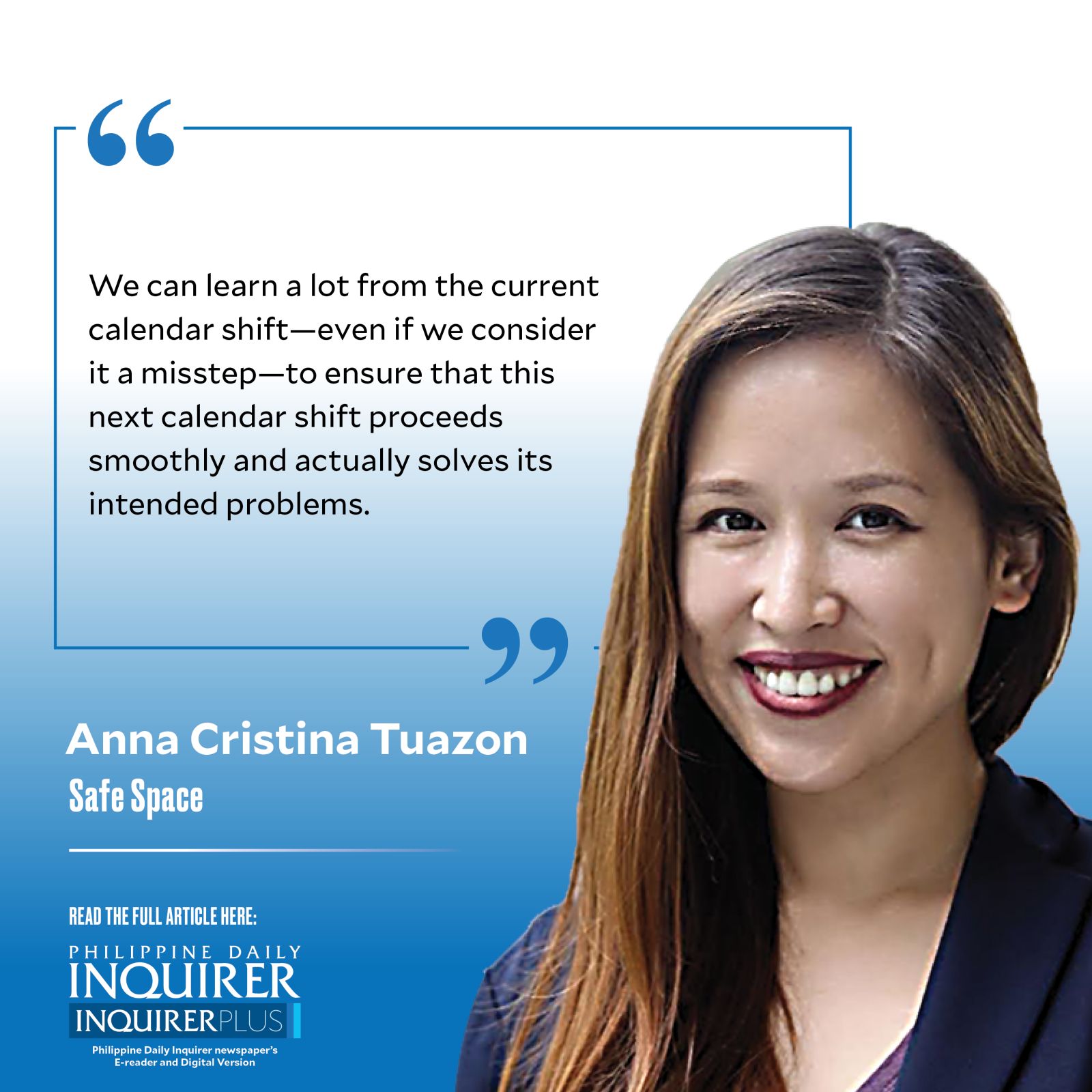Changing calendars for changing times

The Department of Education (DepEd) has made it official: we are shifting back to the old school calendar of June-March from the current August-May calendar. DepEd issued Department Order No. 003 series of 2024, which set new dates of school activities from February until the end of next school year. They laid out a timeline for a gradual transition back to the old school calendar where vacations take place during the summer months of April and May. It is expected that the school year shift will complete its transition by school year 2027-2028.
This is a welcome change from the agency, as teachers and students have been requesting this ever since the school calendar first shifted to August-May back in 2014. The main issue with the present school calendar is that it forced students to attend classes during the heat of the summer months which led to safety concerns of dehydration and heat stroke. I remember this first transition which led to schools scrambling to get funding for air conditioners and other cooling devices for their classrooms. For some, like in my school, the issue wasn’t so easily resolved: old school buildings were not designed to handle that much electrical load and required an extensive overhaul. This caused a massive spike in spending, exacerbating the longstanding budget crises in public schools.
As we start the gradual return of the June-March school year, we need to remember why the academic calendar shifted to begin with. If we simply change it again without making the effort to evaluate the original calendar shift, we might end up desiring to change school calendars yet again in a few years.
The impetus to shift calendars back in 2014 was due to the high number of suspended class days due to typhoons and other climate-related disasters. This led to significant loss of learning, especially as disasters became more frequent and more disruptive. Shifting the calendar as a solution was short-sighted, however, since typhoons and other disasters no longer limited themselves to the season of June-October. Climate change has massively disrupted our seasons and typhoons have begun showing up year-round. This means that shifting the calendar did not matter; typhoons happened during the school year anyway.
The other driving force behind shifting the calendar to August was the desire to “align” with other nations so as to promote international academic exchanges. The powers-that-be felt that if our school calendars matched those of other countries, international student exchanges would be easier. It would also facilitate visiting faculty from other countries, they said. The change in the calendar has not borne this out. There are other more important factors to facilitate international exchanges. Most students simply cannot afford international student exchange programs. It is a very expensive endeavor and schools, especially public schools, do not have funding to support students who desire to learn abroad. The obstacle here is not the calendar but funding. Changing the calendar also did not increase visiting faculty as the issue of adequate pay and ease of collaboration were much more significant hurdles.
We can learn a lot from the current calendar shift—even if we consider it a misstep—to ensure that this next calendar shift proceeds smoothly and actually solves its intended problems. First, any calendar shift needs to be synchronized at all levels of education. This means that the Commission on Higher Education should be part of the conversation. You cannot shift the school year of basic education without it affecting higher education. Because these shifts weren’t coordinated at the beginning, it caused much inconvenience for students transitioning from high school to college.
We need to invest in upgrading our classrooms and other learning environments to be resilient to varying climates, including high temperatures and typhoons. We cannot keep shifting our calendars as we try to keep up with climate change. Times have also changed since the original school calendar was last adopted. During the pandemic-caused school crisis, we have embraced alternative modalities to learning, particularly remote learning and modular learning. This has allowed some form of learning to continue even when in-person classes were suspended due to typhoons and other calamities. Allowing for asynchronous modes of learning have given students the flexibility to catch up on their learning. These alternative modes come with their own challenges, primarily the challenge of access. We need to increase public access to the internet (and devices!) to unlock online modalities for all, not just the privileged few.
We can’t just revert to the old school calendar and expect all our problems to go away. In a sense, there is no going back. Times have changed and we are facing new challenges. Such a change requires coordination with other solutions and strategies to truly make a positive impact on student learning.
—————-
aatuazon@up.edu.ph




















